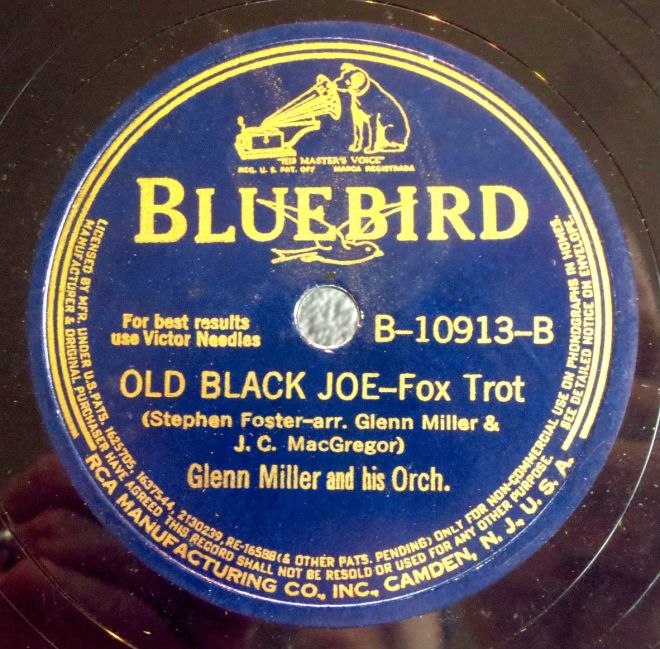Mickey McMickle, Johnny Best, Ray Anthony, Billy May (tp); Glenn Miller, Paul Tanner, Jimmy Priddy, Frank D’Annolfo (tb); Hal McIntyre, Wilbur Schwartz, Ernie Caceres, Tex Beneke, Al Klink (reeds); Chummy MacGregor (p); Jack Lathrop (g,vcl); Trigger Alpert (b); Maurice Purtill (d); Ray Eberle, Marion Hutton (vcl); Bill Finegan, Jerry Gray (arr).
RCA Victor Studios, New York – November 15, 1940, 1:45-4:45 PM
057648-1 Somewhere (RE vcl, JG arr) Bluebird 10959
057649-1 Yes, My Darling Daughter (MH & Band vcl, JG arr) Bluebird 10970
RCA Victor Studios, New York – November 22, 1940, 1:30-4:30 PM
057661-1 A Stone’s Throw from Heaven (RE vcl, BF arr) Bluebird 11063
057662-1 Helpless (RE vcl, JG arr) Victor 20-1600
057663-1 Long Time No See, Baby (MH vcl, JG arr) Victor 20-1563
057663-2 Long Time No See, Baby (MH vcl, JG arr) first issued on LP
057664-1 You Are the One (RE vcl, BF arr) Bluebird 11020
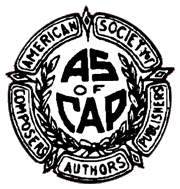 The war in Europe was having less effect on America than the war between ASCAP and BMI that had also been brewing since 1939. The American Society of Composers and Publishers had been issuing warnings to the radio networks that they would shortly be increasing song royalty charges by an enormous amount. In retaliation, broadcasters formed a competing royalty agency, Broadcast Music Incorporated. Since ASCAP had nearly every major songwriter and music publisher under their umbrella, they weren’t overly worried about competition from BMI. The new agency tried signing up composers who went underneath ASCAP’s radar, like country, blues and Latin writers, even amateurs.
The war in Europe was having less effect on America than the war between ASCAP and BMI that had also been brewing since 1939. The American Society of Composers and Publishers had been issuing warnings to the radio networks that they would shortly be increasing song royalty charges by an enormous amount. In retaliation, broadcasters formed a competing royalty agency, Broadcast Music Incorporated. Since ASCAP had nearly every major songwriter and music publisher under their umbrella, they weren’t overly worried about competition from BMI. The new agency tried signing up composers who went underneath ASCAP’s radar, like country, blues and Latin writers, even amateurs.
By the end of 1940, BMI had built up a rather meager catalog, but it would have to do. When the ASCAP deadline of January 1, 1941 came around, the products of BMI and the public domain would have to suffice for all music broadcast by NBC and CBS. The smaller Mutual network signed early with ASCAP, so they had no worries. To make matters worse, the networks decreed that BMI tunes had to be interspersed with ASCAP songs starting on October 10, 1940, to get listeners used to the new music. For each half-hour music broadcast, four of the usual eight tunes played had to be from BMI or elsewhere.
 Ancient, out-of-copyright composers like Stephen Foster and Eddie Leonard suddenly became popular again, as did classical song adaptations (which were already a familiar occurrence). Tchaikovsky and Debussy were now hot tickets! South American music, also newly popular, got a big boost when the song libraries of Ernesto Lecuona and Alberto Dominguez were raided for melodies and new BMI-friendly English lyrics were added.
Ancient, out-of-copyright composers like Stephen Foster and Eddie Leonard suddenly became popular again, as did classical song adaptations (which were already a familiar occurrence). Tchaikovsky and Debussy were now hot tickets! South American music, also newly popular, got a big boost when the song libraries of Ernesto Lecuona and Alberto Dominguez were raided for melodies and new BMI-friendly English lyrics were added.
Glenn Miller’s recorded output would shortly begin reflecting the new radio rules, since Glenn certainly wanted to get his records played on the air. His own Mutual Music publishing arm signed with BMI and he corralled any of his arrangers and musicians who also wrote songs.
The short session of November 15th consisted of two ASCAP compositions, one a flop and the other a huge hit. SOMEWHERE is a bland song from of all things, an ice skating revue, the Ice Capades of 1941. It was written by distinguished songwriters Peter DeRose and John Latouche (the lyricist of Cabin in the Sky), but is forgotten as soon as it’s heard. The band and Ray do their usual professional job, but why Glenn singled the number out for recording is a mystery.
On the other hand, YES MY DARLING DAUGHTER is a knockout from start to finish. Jerry Gray’s kicky arrangement, Marion’s vocal and 16 supercharged bars by seldom-featured Al Klink combine to produce a winning record. Dinah Shore and the Andrews Sisters also got big sales from their discs.
Another session a week later produced four neglected sides, familiar only to Miller completists and all BMI products. A STONE’S THROW FROM HEAVEN is a lovely melody unfortunately saddled with a clichéd lyric. Three unknowns composed it – Bob Ray, Jan Burton and Irving Green. Ray Eberle sings the song nicely and Bill Finegan wrapped it in a fine arrangement, but nothing came of it.
YOU ARE THE ONE is yet another dull, undistinguished ballad. It was a rare collaboration between John Scott Trotter, conductor of Bing Crosby’s Kraft Music Hall radio series and Carroll Carroll, head writer for the show. Likely Glenn’s friendship with Bing resulted in this recording.
Miller had been using guitarist Jack Lathrop as an occasional vocalist. Now he gave him a tryout as a composer, recording and publishing two of his songs. Both tunes got a fair amount of airplay, but they went nowhere. Oddly, neither record was issued at the time, a very rare occurrence for Glenn’s output. If RCA had not been desperate for new product during the 1942-44 recording ban, they might have languished in the vaults forever.
HELPLESS is a sweet little tune, well sung by Ray and the record is a forgotten treat. LONG TIME NO SEE, BABY had definite possibilities, a jaunty, hip number with Marion at her best and Tex grooving on sax. The record’s delayed release did it no favors. 
LONG TIME was issued in 1943 on Victor with HERE WE GO AGAIN, a product of the last Miller dates, as the flip side. HELPLESS was paired in early 1944 with a timely reissue of the 1942 WHEN JOHNNY COMES MARCHING HOME and has the distinction of being the last “new” Glenn Miller civilian band recording to be issued on Victor 78s.
For some reason, Glenn had lately been featuring Marion Hutton less frequently on records and broadcasts. On the Chesterfield airings, Marion and Ray would get one number apiece, but at the Café Rouge, she’d usually get just one vocal per half-hour program, while Ray would sing three. Her lone vocal on the November 22nd session would be her last with Miller for a long time.
Meanwhile, the trumpet section, having been in a state of flux since Clyde Hurley left in May, finally settled into a personnel configuration that would remain intact for long time. The rest of the band was firmly set, so now Glenn had the musicians he wanted, most of whom would stay until the band broke up.
Now he needed more popular records. Glenn’s hit-making ability seemed to be on the blink as 1940 wound to its conclusion, but the next session would be a step in the right direction.

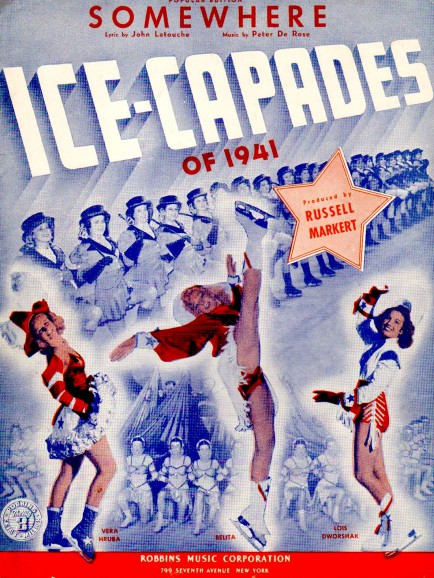

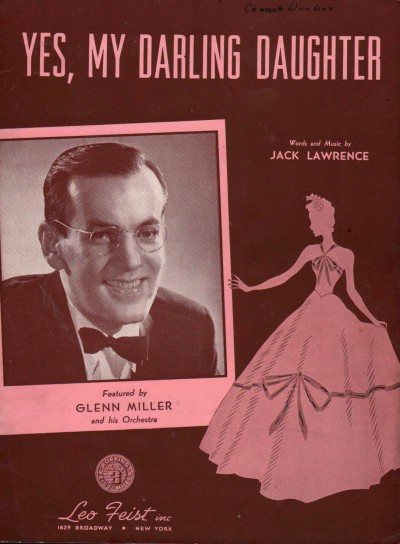
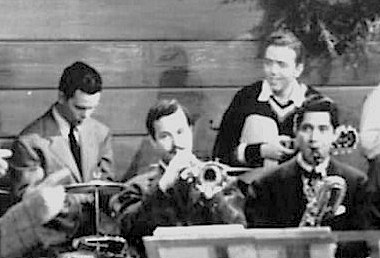


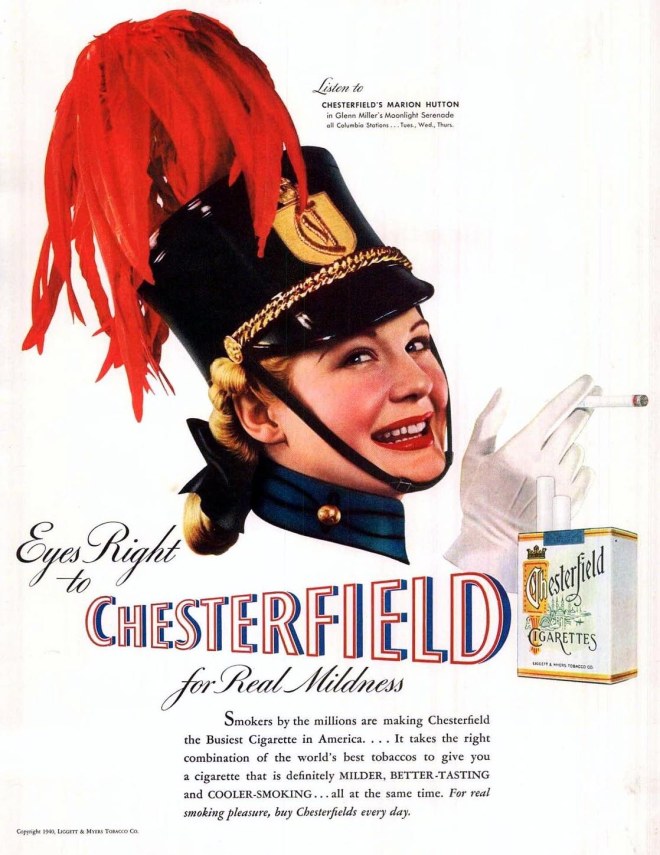


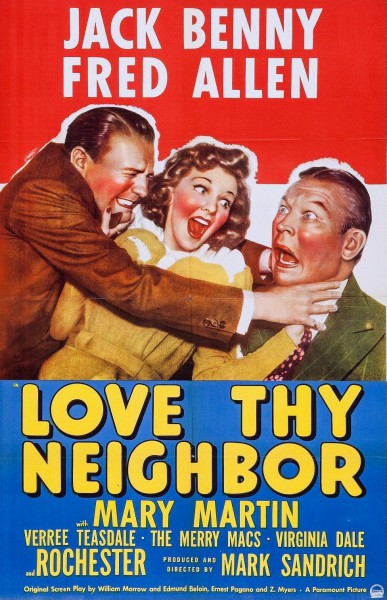
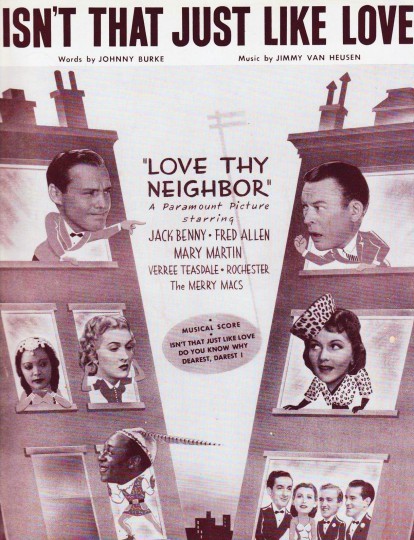

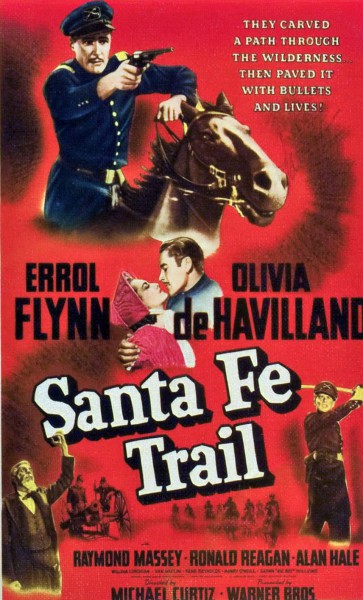
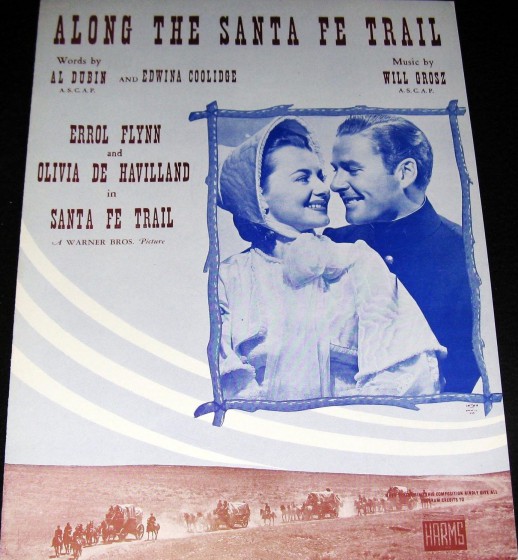
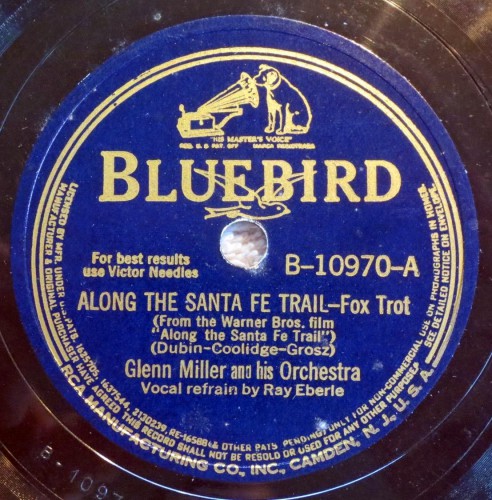
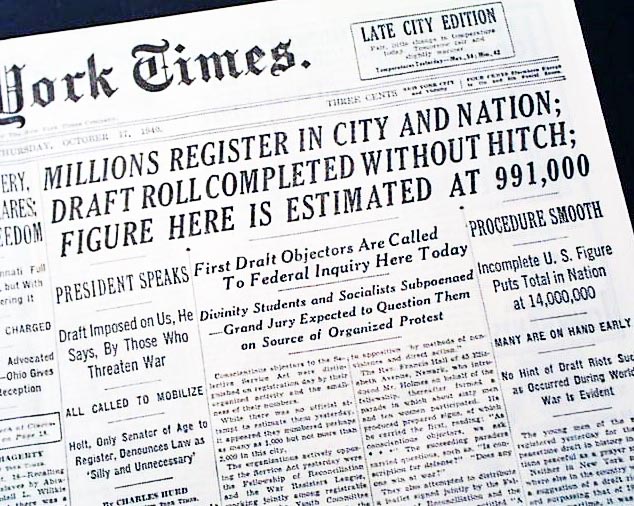

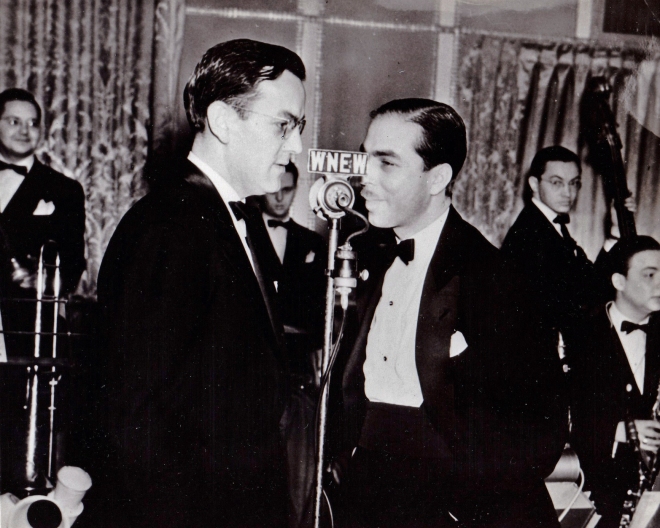
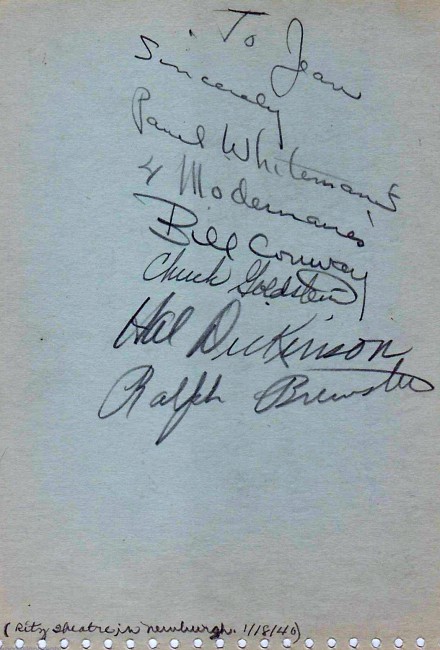

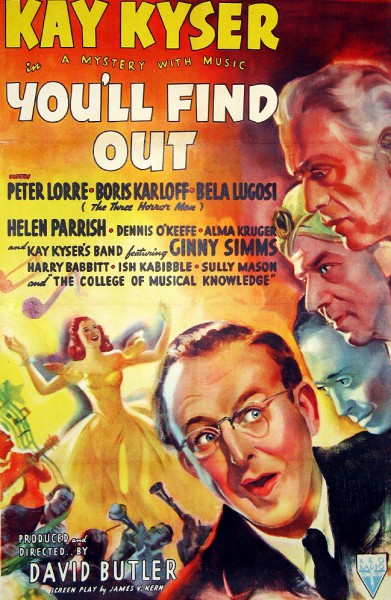

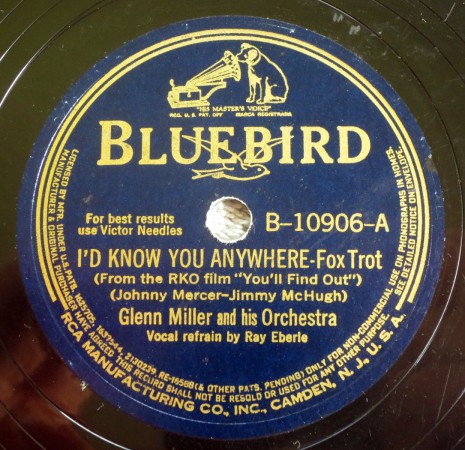

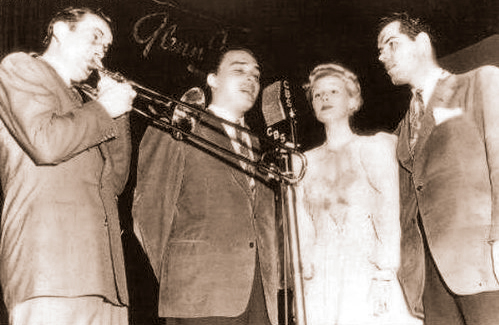

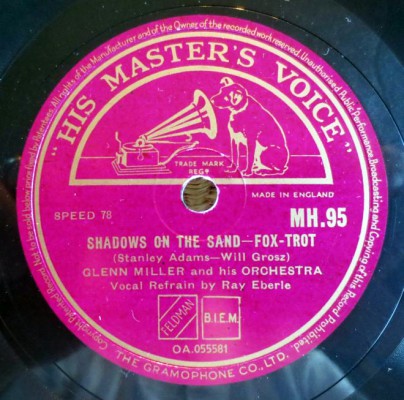



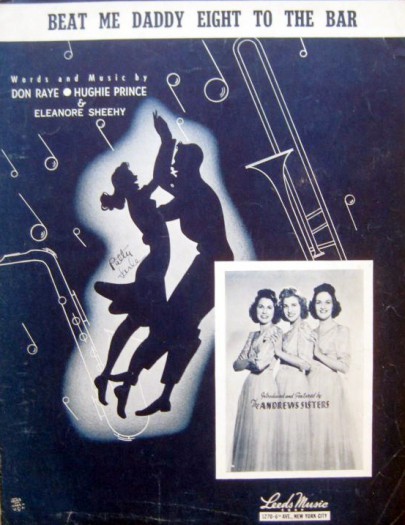



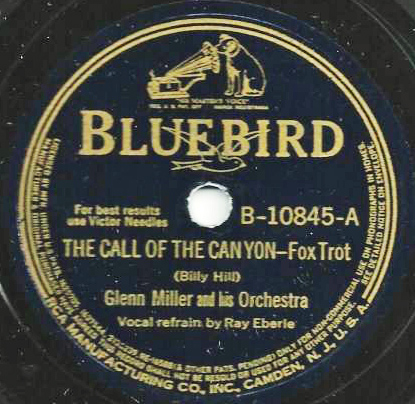



 Post-Swing Era, the song was deservedly resurrected by Ella Fitzgerald, Anita O’ Day and Julie London, among others.
Post-Swing Era, the song was deservedly resurrected by Ella Fitzgerald, Anita O’ Day and Julie London, among others.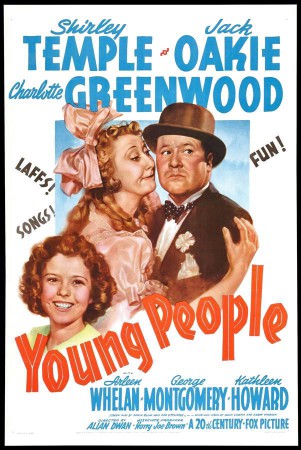

 A new, more “mature” sound on Miller ballad arrangements started developing with THE NEARNESS OF YOU and now is heard on A HANDFUL OF STARS. Credit is due to arranger Bill Finegan, who wrote both. It’s a richer, slower, more thoughtful approach, providing a sympathetic frame for Ray Eberle’s vocals. A more congenial tempo and subtler backing now replace the relentless pumping rhythm of MOON LOVE and OH, YOU CRAZY MOON.
A new, more “mature” sound on Miller ballad arrangements started developing with THE NEARNESS OF YOU and now is heard on A HANDFUL OF STARS. Credit is due to arranger Bill Finegan, who wrote both. It’s a richer, slower, more thoughtful approach, providing a sympathetic frame for Ray Eberle’s vocals. A more congenial tempo and subtler backing now replace the relentless pumping rhythm of MOON LOVE and OH, YOU CRAZY MOON.